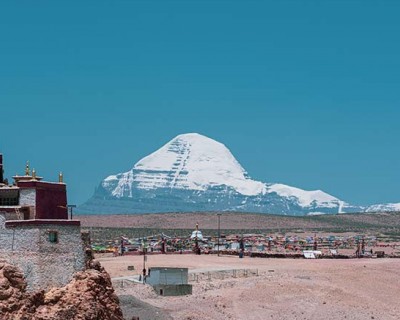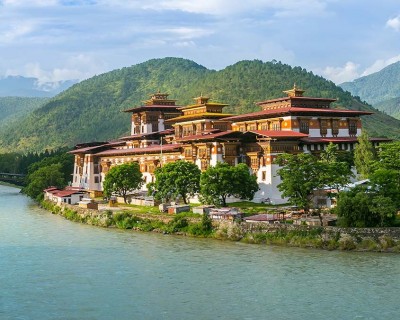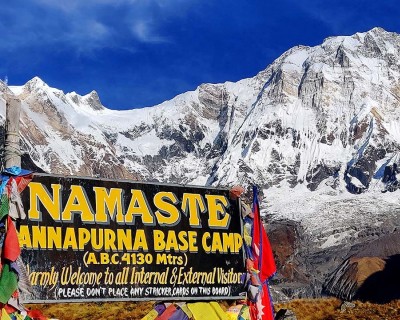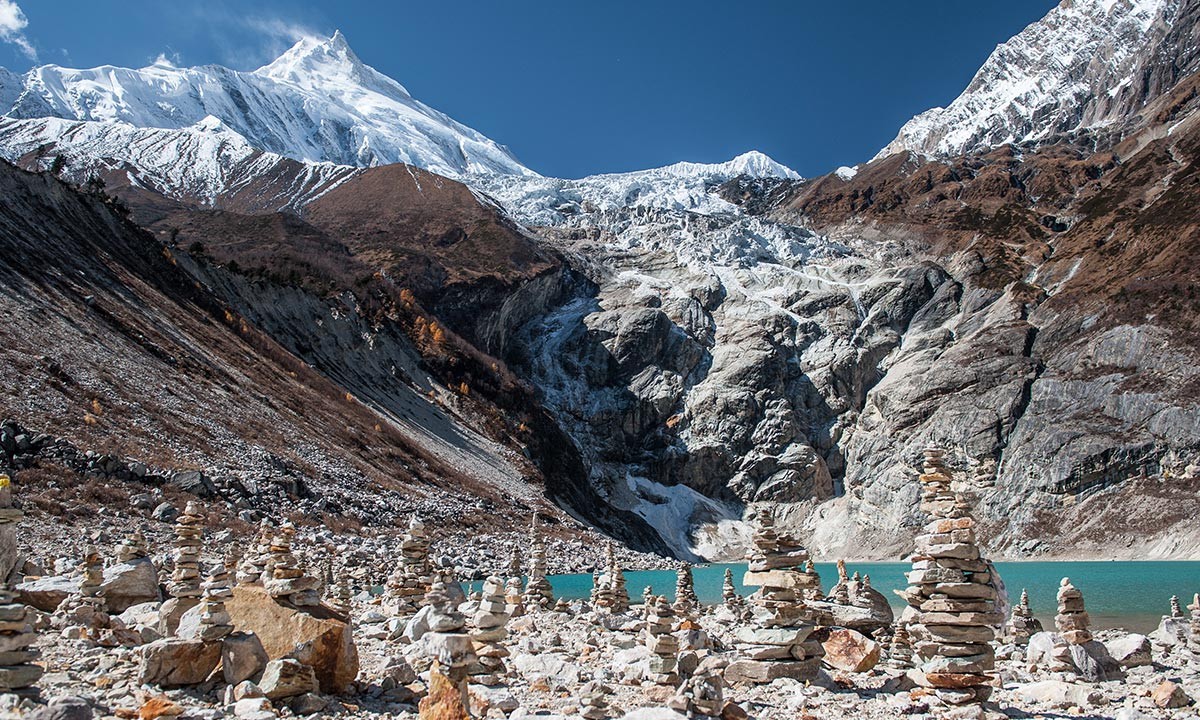
Secondly, the clear blue skies in May offer breathtaking views of the Himalayan mountain range, making the trek even more rewarding.
It's important to note that although lower elevations may have suitable temperatures, higher elevations can still be cold. Therefore, trekkers should come prepared with appropriate clothing and gear to stay warm.
The Manaslu Circuit Trek in May is truly a feast for the senses! With clear skies and stable weather, you'll enjoy unobstructed views of the majestic mountains. But wait, there's more! The trails and surrounding hills are blanketed in a colorful array of wildflowers, like rhododendrons, adding a dash of enchantment to the already adventurous journey.
Trekking in May provides stunning views and abundant wildlife and opens the door to a rich cultural experience. Along the trail, you'll explore ancient settlements and interact with the local people, giving you a taste of the region's heritage and culture.
But beware, fellow adventurer! With so many benefits, the Manaslu Circuit Trek during May attracts hordes of trekkers. To avoid disappointment, book your meals and accommodation in advance. Trust us; it's worth it to prepare for this unique and unforgettable experience fully.
You can take help from experienced professionals to book and plan your trip. So, Contact us immediately!
👉 You may want to read: Manaslu Trek in April.
Weather Conditions in May
Springtime in May is the prime season to embark on the Manaslu Circuit trek, as the weather is ideal for exploring the region. During the day, temperatures range from 15-25 degrees Celsius, providing a comfortable environment for trekking.
While nighttime temperatures can dip to 5 degrees Celsius, the high-altitude trails offer clear visibility, making it possible to trek early or late. Don't miss the chance to have an unforgettable trekking experience in the perfect weather conditions of the Manaslu Circuit.
May is renowned for its sunny skies and bright days, making it an ideal time to trek in the Manaslu region. The stunning views of the Himalayas are best experienced during this time without any hindrance from heavy rain, snow, or wind.
With a bearable humidity level, the Manaslu Circuit Trek promises to be a memorable journey. However, it's crucial to thoroughly prepare for the trek, even during the peak Spring season, to ensure a successful and enjoyable experience.
Highlights of Manaslu Circuit Trek in May
- Hiking through diverse landscapes with favorable weather
- Discovering the area's local communities, cultural heritage, and customs
- Experiencing the trails in a lively Spring environment
- Spotting wildlife that has come out of hibernation
- Viewing the majestic Himalayan peaks, including Mt. Manaslu, covered in snow
- Navigating through various natural features such as waterfalls, lakes, and glaciers
- Joining a crowded trail with trekkers from across the globe.
Why Go For Manaslu Circuit Trek in May?
Himalayan views
The Manaslu Circuit Trek offers a breathtaking view of the Himalayas. This trek takes you through stunning landmarks and serene terrains such as green hills, lakes, rivers, and mountain passes. Clear weather and high visibility make it possible to appreciate the beautiful surroundings fully.
Ideal Weather
Conditions May is the perfect time for this trek due to the Manaslu region's pleasant climate and weather. The serene terrains of the area can be explored in comfort, and the beautiful Spring weather makes the experience even more enjoyable.
The high-altitude region experiences dry and stable weather in May, with moderate temperatures, making it ideal for trekking. Although temperatures drop at night, proper gear and clothing ensure a comfortable journey.
Vibrant Atmosphere The trails of the Manaslu Circuit Trek are at their most vibrant in May, full of rhododendron trees and scenic routes. Wildlife thrives during this time, providing the opportunity to see rare and endangered species in the region. The trails offer bright and colorful views that can be captured in photos.
Avoiding Harsh Conditions May is the best time to trek the Manaslu Circuit as it avoids harsh weather conditions such as heavy rain, thunderstorms, and snow. Weather-related challenges like landslides, avalanches, and soil erosion are also unlikely during this time.
Long Sunny Days The long sunny days in May provide a safe journey for trekkers on the Manaslu Circuit Trek. There is no threat of reaching your destination in the dark, making the trek more enjoyable.
Wildlife Exploration Spring is a great time to explore the wildlife of the Manaslu conservation area, as it is the month when animals are most active. This includes Himalayan tahr, red pandas, falcons, pikas, snow leopards, and langurs.
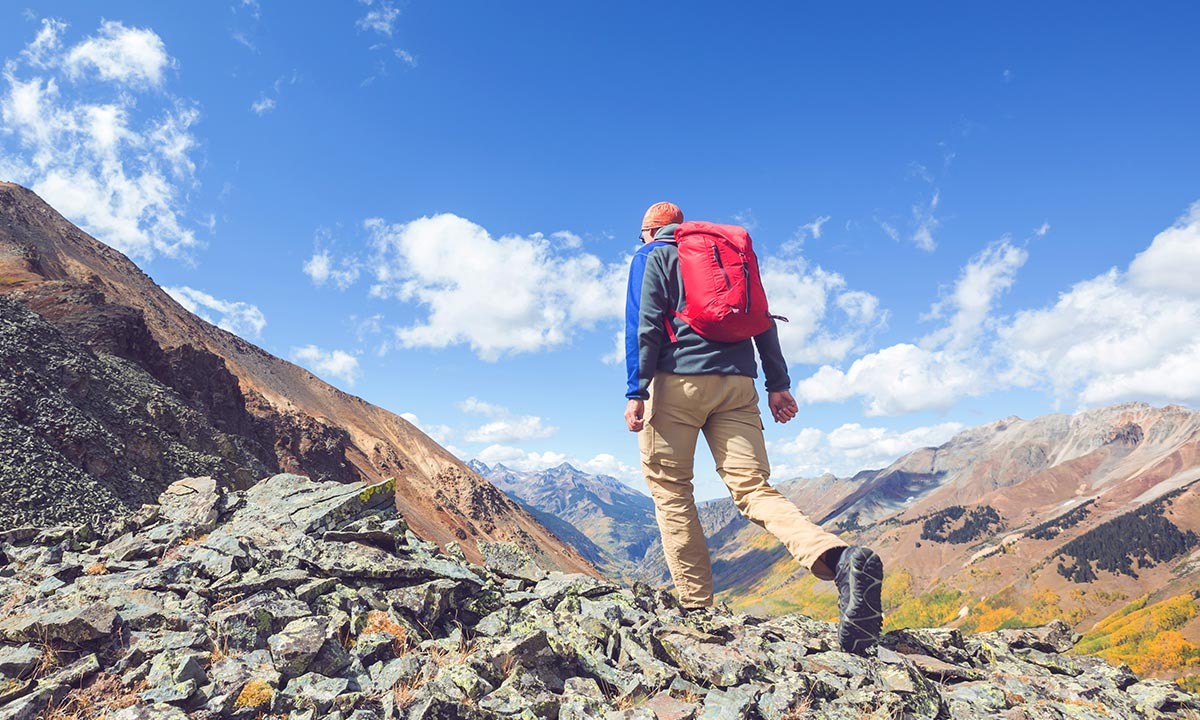
Manaslu Circuit Trek Itinerary
Day 1 Drive Kathmandu to Arughat and trek to Soti Khola
The exciting Manaslu Circuit Trek begins with a scenic drive from Kathmandu to Arughat, which takes approximately 5-6 hours. The journey offers breathtaking views of hilly regions, terrace farming, water streams, and rivers.
After passing through the settlement of Dhading Besi, the roads become rough, but finally, you will arrive at Arughat, where you can spend the night at a local teahouse. The next day, you will trek to Soti Khola, which takes about 3-4 hours, and spend the night there. Soti Khola is located at an altitude of 710m.
Day 2 Trek from Arughat to Machhakhola
The second day of the Manaslu Circuit Trek takes you from Arughat to Machhakhola, which is at an altitude of 870m. The trek covers a distance of 5-6 hours, passing through the lush forests of Sal trees and other vegetation.
You will cross several suspension bridges over the Budhi Gandaki River and climb rocky cliffs, offering stunning views of the valley. Along the trail, you will encounter the Khursani village and the Labubesi, a Gurung village.
The trek also takes you through sandy trails over the river bed, stony ridges, and other rugged terrains, providing a thrilling adventure experience. After a long and challenging trek, you will reach Machhakhola village, where you will spend the night at a local tea house.
Day 3 Trek from Machhakhola to Jagat
Day three of the Manaslu Circuit Trek takes you from Machhakhola to Jagat at an altitude of 1350m. The trek covers a distance of 5-6 hours and passes through scenic terrains and serene trails.
Starting from Machhakhola, the trail takes you along a narrow path, passing through Tharo Khola and Khola Besi before reaching the Tatopani hot spring. The trail ascends the ridge and crosses the Budhi Gandaki River on a suspension bridge.
You will climb stony staircases, cross a landslide area, and pass through Doban, before settling in Thado Bharyang. Continuing along the beautiful west bank of the Budhi Gandaki River, the trail takes you up a ridge alongside the river to the village settlement of Jagat. You will have dinner, rest, and spend the night at a local teahouse.
Day 4 Trek from Jagat to Deng
On Day 4 of the Manaslu Circuit Trek, you will set out from Jagat and make your way to Deng, a small village at an altitude of 2130m. The trek takes approximately 5-6 hours and will take you through steep gorges, grasslands, and forested bamboo trails.
After crossing the east bank of the Budhi Gandaki river, you will arrive at the settlement of Deng, where you can rest for the night in a local teahouse. The trek offers stunning views of the surrounding natural terrains and is sure to be a memorable experience for any traveler.
Day 5 Trek from Deng to Namrung
On day 5 of the trek, the journey from Deng takes you to the picturesque destination of Namrung, with a walking duration of 5-6 hours. The trail offers breathtaking views of the surrounding region, including the Budhi Gandaki River and various viewpoint areas.
The trek passes through Rana and the west side of the Budhi Gandaki valley, with numerous mani stones, Buddhist landmarks, and heritage sites such as Ghap and Prok villages. You will also come across Gompas and monasteries as you pass through bamboo forests and cross several rivers.
The trail then turns flat and smooth before a final uphill climb to reach Namrung, where you will spend the night and enjoy the stunning vista of the Ganesh Himal, Siring, and Mt. Himal Chuli.
Day 6 Trek from Namrung to Lho
The trek from Namrung to Lho takes you through a picturesque journey to the village of Lho, set at an altitude of 3180 meters. The trail starts with a steep uphill climb through the lush forested area and takes about 5-6 hours to complete.
On the way, you will pass through several villages with traditional terraces and shortens, cross the Simnang valley, and visit the settlement of Sho. Finally, you will arrive at Lho, where you can rest for the night at a local teahouse.
Day 7 Trek from Lho to Samagaun
From Sama, the trail continues to Samagaon, the largest village in the Manaslu region. The trail passes through the barley fields and continues uphill to reach the destination of Samagaon.
The settlement of Samagaon is situated at an altitude of 3500m and provides stunning views of the surrounding Himalayas. Here, you can explore the local culture and tradition and spend the night at a teahouse.
Day 8 Acclimatization day at Samagaun
On the 8th day of the trek, you will take a break in Samagaon for acclimatization. This allows you to explore the village's stunning natural terrain and adjust to the high-altitude environment.
A key acclimatization spot in the region is the Pungyen Gompa, an important religious site. Take the time to visit this gompa and monastery and enjoy views of the surrounding glaciers from a hilltop viewpoint. At the end of the day, return to the comfortable teahouse in Samagaon for the night.
Day 9 Trek from Samagaon to Samdo
The trek from Samagaon to Samdo takes you along a scenic trail that crosses the Budhi Gandaki river through suspension bridges. You will be walking through forested areas of juniper and other vegetation while enjoying the view of the river.
The trail leads to the Larkya La and offers panoramic Himalayan views. You will spend the night at a teahouse in Samdo, where you can take a break and acclimatize to the altitude before continuing your journey. The walking duration is approximately 5-6 hours.
Day 10 Trek from Samdo to Dharamsala
On Day 10 of the trek, you will set out on a scenic hike from Samdo to Dharamsala, which sits at an elevation of 4480m. The trek will take approximately 5-6 hours, and you will spend the night in a teahouse in Dharamsala.
During the trek, you will cross several wooden bridges over the Budhi Gandaki River and encounter multiple water streams while hiking upwards through the beautiful terrain.
This section highlights the opportunity to see the Larkya glacier along the trail. This trek is designed to allow for exploration and acclimatization to the altitude.
Day 11 Cross the Larke pass, trek down to Bimtang
On Day 11 of the trek, you will embark on a journey to cross the breathtaking Larke Pass, standing at an altitude of 5106 meters.
The trekking trail will take you through valleys, cliffsides, and ridges to reach the top of the Larkya glacier. At the top, you will have a breathtaking view of Larkya peak and other Himalayan peaks like Annapurna, Himlung, Kanggru, and Cheo.
The ascent to the pass can be steep and challenging, so it is essential to exercise caution while trekking. After several hours of walking, you will reach the Bhimtang and enjoy the magnificent view of Mount Manaslu. You will spend the night here, surrounded by the region's stunning landscapes.
Day 12 Trek from Bintang to Tilche
On day 12, you will trek from Bintang to Tilche at an altitude of 2560m. The trek is estimated to take 5-6 hours. You will stay overnight at Tilche. During the trek, you will pass through beautiful landscapes, high pasture lands, forests with rhododendron trees, narrow fields, and ridges.
You will also cross the Dudh Khola over a suspension bridge. The journey will lead you uphill to Tiliche, where you can rest for the night in a teahouse.
Day 13 Trek from Tilche to Dharapani, Take Jeep to Besisahar
On Day 13, the trek begins with a journey along a stone-paved path to Dharapani. The trek route passes through rugged stony paths, crosses a bridge over Dudh Khola, and goes through the village of Thonje with its walls and prayer flags.
At the police checkpoint, trekkers will need to show their permits before continuing to Dharapani. Along the way, the trail goes through forested areas, mani walls, and villages, finally reaching the large waterfall at Tal.
After about 1-2 hours of trekking, you will reach Dharapani. From there, you will take a jeep drive to Besisahar. The drive offers scenic views of the banks of Marsyangdi Khola and the broad valleys, pastures, and towns. The drive ends with a gentle downhill drive to Besisahar, where you will spend the night at a tea house.
Day 14 Drive back to Kathmandu from Besisahar
On Day 14, you will embark on a scenic drive from Besisahar back to Kathmandu. The journey will take approximately 5-6 hours and will take you through stunning hilly highways, passing by the banks of the Marsyangdi and Trishuli Rivers.
You'll see beautiful rice fields, terraced farm hills, rivers, waterfalls, valleys, and other scenic views. Once you arrive in Kathmandu, you can rest and spend the night at a local teahouse.
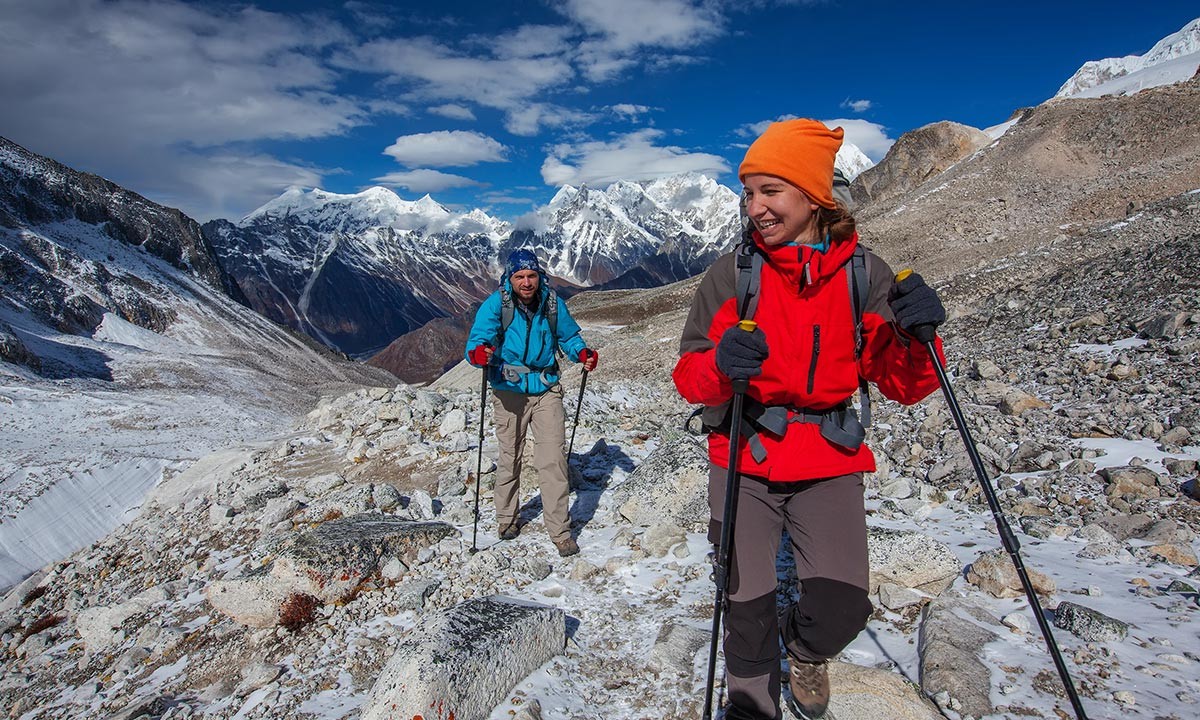
How Difficult is Manaslu Circuit Trek in May?
The Manaslu Circuit Trek offers breathtaking Himalayan views but has specific difficulties inherent to high-altitude trekking. These difficulties include altitude sickness, challenging terrains, extended duration, unpredictable itinerary, basic accommodation, and limited food options.
Altitude sickness risk
Due to its high altitude, trekkers on the Manaslu Circuit Trek are vulnerable to altitude sickness. It is a common concern among trekkers who cannot adapt to low oxygen levels and air pressure at high altitudes.
Regular acclimatization, hydration, and rest are crucial to prevent altitude sickness. Sleeping at a lower altitude than the highest point you reached and trekking at a slower pace can also help reduce the risk of altitude sickness.
Rugged and remote trails
The Manaslu Circuit Trek features remote trails that can be challenging to navigate due to rugged terrains. Trekkers will need to traverse through difficult landscapes to reach their destinations.
Physical and mental preparation
To complete the trek, trekkers will need a high level of physical fitness, proper gear and equipment, and a stable mental state. The trek can last for 5-6 hours a day for 2 weeks or more, making it a physically and mentally demanding experience.
Accommodation and food options
Trekkers can stay in basic teahouses with minimal amenities, including basic beds and limited food options, mainly consisting of Dal Bhat, a Nepalese dish. As you move to higher altitudes, food options become more limited, making it challenging for some trekkers.
Packing List for Manaslu Trek in May
Clothing
- Trekking boots
- Long sleeve shirts
- Waterproof hiking pants
- Woolen gloves
- Thermal underwear
- Pair of sandals
- Warm hat
- Down jacket
- Windbreaker
- Socks
- Umbrella or raincoat
Toiletries
- Toilet paper
- Toothbrush
- Shampoo
- Soap
- Toothpaste
- Face towel
- Sanitary pads or tampons
- Lip balm
- Moisturizer
- Hand sanitizer
- Quick-drying towel
- Wet wipes
First Aid
- Imodium
- Paracetamol
- Mosquito repellent
- Antibacterial sanitizer
- Diamox tablets
- Water purification tablets
- Anti-nausea medication
Essential Accessories
- Sunglasses
- Portable chargers
- Extra batteries
- Trekking poles
- Sunglasses
- High SPF sunscreen
- Solar charger
- Playing cards
- Sleeping bag
- Notebook and map
- Reading material (books or Kindle)
Important Documents
- Travel insurance policy
- Passport
- Travel permits
Essential Tips for the Manaslu Circuit Trek in April
- Pack only the necessary items for the trek.
- Invest in a warm-down jacket for high-altitude conditions.
- Maintain a slow, steady pace while trekking.
- Wear sweat-wicking, quick-drying clothing.
- Consider hiring experienced guides and porters.
- Master the art of bargaining in local shops along the trail.
- Don't forget to pack all necessary first-aid items.
- Obtain travel insurance before the trek.
- Adequately prepare with physical training exercises.
- Make sure to have all the necessary gear and equipment.
- Acclimate and hydrate regularly throughout the trek.
- Avoid consuming alcohol, as it increases the risk of altitude sickness and dehydration.
- Bring along toiletries and sanitary products for personal hygiene.
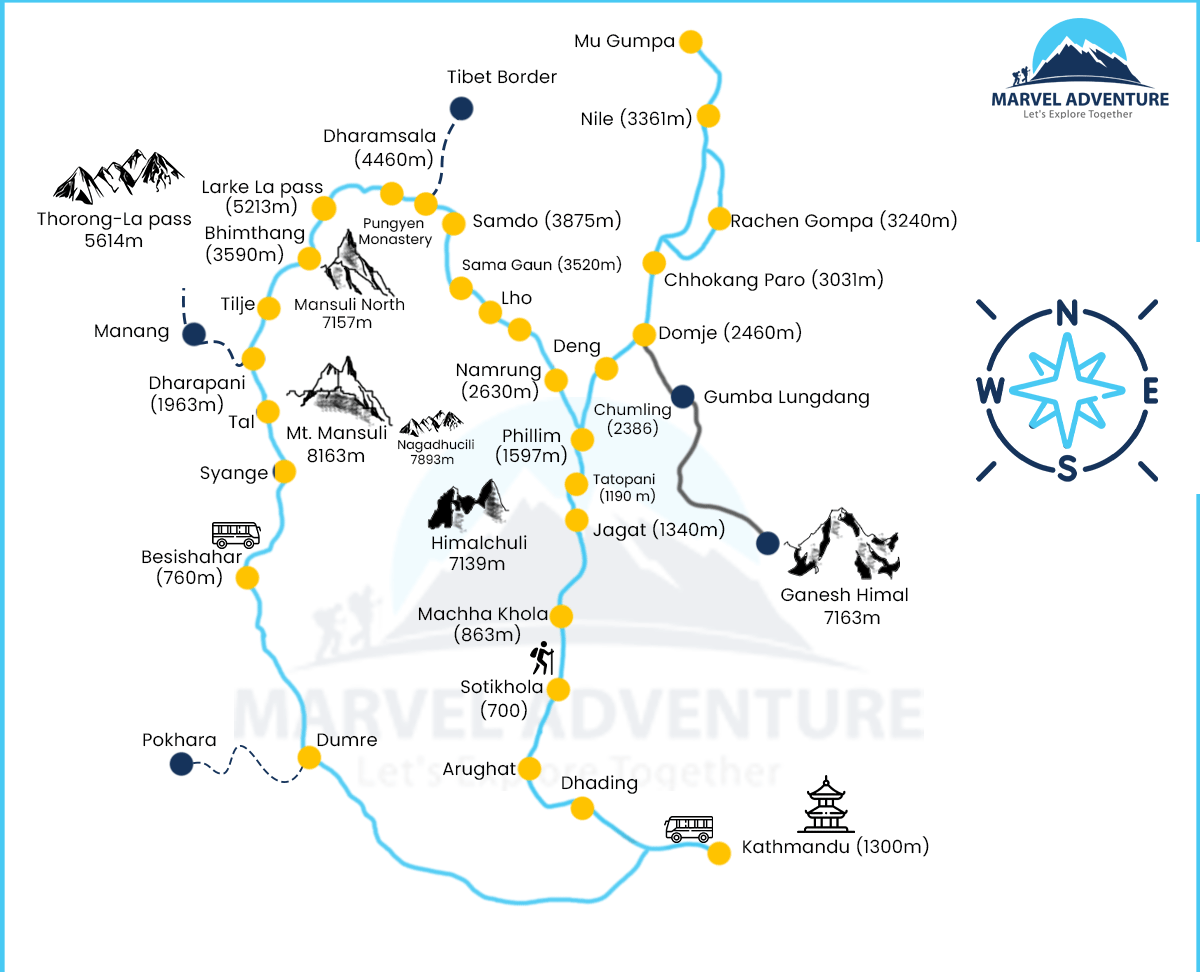
Frequently Asked Questions (FAQ)
What is the weather like in the Manaslu region?
The weather in the Manaslu region of Nepal is primarily cold and dry, with occasional snowfall in the winter months. During the summer, the temperature can rise to around 15-30 degrees Celsius during the day, but it remains cool at night.
Due to its high elevation, the weather can be unpredictable and change quickly, so it's essential to be prepared for various conditions.
When was the Manaslu hiking route opened?
Regarding the Manaslu region, the Manaslu Circuit Trek or Manaslu Trek is a popular hiking route in the Himalayas of Nepal. The Manaslu Circuit Trek was opened to foreign trekkers in 1992 and has since become a popular tourism destination, providing income for the local communities.
How much does it cost to climb Manaslu?
The cost of climbing Manaslu varies depending on several factors, such as the length of the Manaslu trek, the type of services desired, and the time of year. A typical Manaslu expedition can cost anywhere between USD 4,000 to USD 7,000 or more.
This cost usually includes Manaslu permits, guide services, climbing equipment, food and lodging, and transportation. It's important to note that this is just an estimate, and prices can vary greatly. It's always a good idea to thoroughly research and compare prices from multiple Manaslu climbing providers before booking a Manaslu climbing expedition.
Why is Manaslu called Killer mountain?
Manaslu, a mountain in the Nepal Himalayas, is known as the "Killer Mountain" due to its history of climbing fatalities. Its reputation as a dangerous peak result from various climbing-related incidents, including avalanches and falls. However, many climbers still attempt to summit Manaslu each year with the help of experienced guides and proper equipment.
Which season is best to climb, Manaslu?
The best time to climb Manaslu is typically September to November and March to May, with stable weather and clear skies. Climbing requires experience, physical fitness, and proper equipment and should only be attempted with a reputable guide.
Is Manaslu harder than Everest?
Whether Manaslu is harder than Everest is subjective and depends on factors such as the climber's experience and physical fitness, the route conditions, and the weather. Manaslu and Everest are considered challenging peaks requiring preparation, experience, and physical and mental fortitude.
Conclusion
In conclusion, trekking the Manaslu Circuit in May is a fantastic adventure. This month falls in the midst of spring, the peak season for traveling and trekking. The weather conditions are stable, clear, and dry, making it an ideal time for a trek.
Additionally, May is considered a shoulder season, with fewer trekkers compared to peak months like September and October. This offers a more tranquil and enjoyable trekking experience.
May is also when the stunning rhododendron flowers bloom, enhancing the beauty of the trek. Furthermore, the trails during this time are less muddy and slippery compared to the rainy season, making it easier to navigate. Overall, the Manaslu Circuit trek in April is an extraordinary journey for any trekker.






